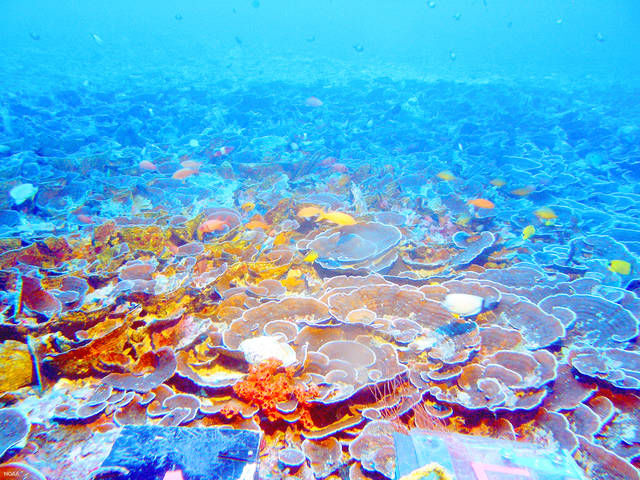LIHUE — New information could be on the horizon for the world’s declining coral reefs, as well as a more complete picture of their health. Researchers are combing through data taken from Kauai and other islands in the Pacific through
LIHUE — New information could be on the horizon for the world’s declining coral reefs, as well as a more complete picture of their health.
Researchers are combing through data taken from Kauai and other islands in the Pacific through the Coral Reef Assessment and Monitoring Program.
Studies conducted last summer off the Napali Coast by Bernardo Vargas-Angel and his team from the National Oceanic and Atmospheric Administration contributed to the data.
The goal is to establish reef health trends to be used in further research.
“It gives context to some of the local efforts in terms of these are the changes that are being observed,” Vargas-Angel said.
The Main and Northwest Hawaiian Islands are on a three-year cycle for the research cruise, and it’s already making way for the Mariana Islands.
Eric Brown, a marine ecologist with the National Parks Service, is analyzing data from Hanalei Bay, recorded in 2016. He’s waiting to finish the analysis to see if he can measure any increased coral cover.
“The before and after data set hopefully will shed some light on the impacts of the bleaching event,” he said. “We’re trying to get a better handle on the threats and where they are occurring spatially.”
Pollutant inputs, sediment loads, temperature changes, ocean chemistry changes, freshwater inputs are all on the list of things that could threaten reef health.
Ruth Gates, at the Hawaii Institute for Marine Biology, is doing some of that cutting-edge research. She and her team are cross-breeding different characteristics of corals that survived the 2014 and 2015 bleaching events.
The hope is to breed a species that can coexist and adapt with rising sea temperatures, which experts say is the number one cause of bleaching.
Henrietta Dulai, a geochemist and associate professor at the University of Hawaii who studies submarine groundwater discharge, has been looking into some of the things other than bleaching that could have an effect on the reefs.
She and her team are studying the pollutants that are traveling through the unseen pathways of the watershed.
They’re also looking at how the increased nutrients that travel with them affect the corals by changing the chemical balance in the sea, leading to ocean acidification.
“We need to do more studies, because maybe they can adjust to this, but we don’t know. Potentially it’s affecting the reef,” she said.
In Kapaa, marine biologist Katherine Muzik has been tending an underwater coral project, named Mala Moana, or “Ocean Garden” in Hawaiian.
The site is in front of Hotel Coral Reef, just over 300 feet from shore, where Muzik has transplanted fragments of living coral under a permit from the state’s Department of Land and Natural Resources.
The marine biologist got the permit to transplant the corals from January 2015 to December 2015. The last coral she planted was on Dec. 31, 2015.
These are corals that she finds rolling around free on the sand and puts back into the substrate using Epoxy glue, which was mandated by the state permit.
In December, of the 10 cauliflower corals she planted, only one survived. She only found one porkchop coral still alive. Of the four pieces of mound coral Muzik found, all are surviving.
Muzik is working on a permit to continue transplanting the “corals of opportunity” and while she’s doing that, she’s also doing what she can to monitor the condition of the waters around her Mala Moana.
She’s one of a group of scientists worldwide, people like Vargas-Angel and Brown as well, trying to save the reefs.
“We’re getting more aware of how our activities on land are affecting the organisms in the ocean,” Vargas-Angel said. “It’s important to know how these connections work.”


